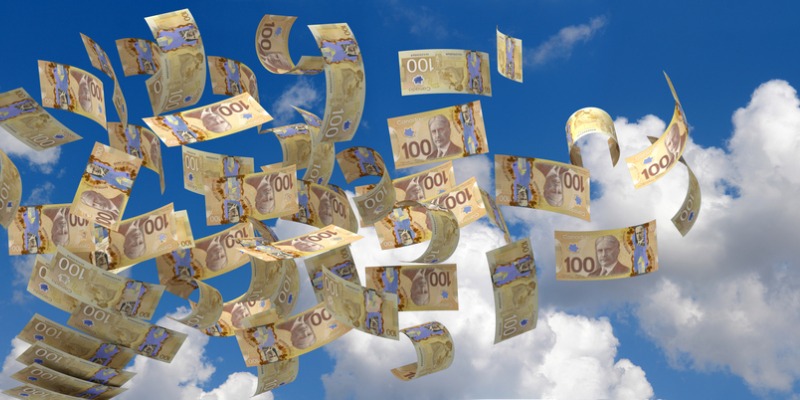Ottawa benefits from inflation-spurred tax revenue

Most Canadians born after 1990 have never experienced a serious episode of inflation like we’re experiencing in Canada and most other countries right now. Simply put, inflation means that prices (on average) for goods and services are increasing. Since it’s rare for the average price level to remain constant over any significant period of time, inflation has and always will be with us, to a greater or lesser extent. While the current relatively rapid inflation rate has captured public attention, the causes, consequences—and crucially, the beneficiaries—of inflation remain largely unknown to many Canadians.
Since 1991, the Bank of Canada has set a 2 per cent per year target for the rate of inflation. While economists don’t agree on an “optimal” rate, most agree that a low and (importantly) stable rate of inflation should be the goal of policymakers. In this regard, the Bank of Canada has done an admirable job of keeping the rate of inflation over the past 30 years at around 2 per cent.
But today, the inflation rate in Canada has spiked well above the Bank of Canada’s target rate, reaching 5.7 per cent at an annualized rate in February 2022, the highest inflation rate in 30 years, and will likely climb higher in the months ahead. The bank is now taking action by raising its policy interest rate to bring inflation back to its target rate after arguably contributing to the current inflation problem by purchasing government bonds from Ottawa, which helped the Trudeau government massively increase spending while also dramatically increasing the money supply. As a result, we now have the current inflation problem worrying most Canadians, although apparently not the prime minister.
Indeed, in August 2021, Prime Minister Trudeau said that when thinking about economic policy prior to the election, he didn’t think about monetary policy but rather thought about families. And yet, Canadian families are hurt by higher prices for food, gasoline and rental housing. Imprudent monetary policy contributes to higher prices for those necessities and most other goods and services.
But here’s something Canadians likely won’t hear from the federal government. Perhaps the prime minister doesn’t worry about imprudent monetary policy because governments are the clear beneficiaries of inflation, in two main ways.
First, by reducing the purchasing power of the Canadian dollar, inflation effectively reduces the real cost of servicing and retiring outstanding government debt (in the latest federal budget, which includes $90.1 billion in new program spending over the next four years, the Trudeau government projects federal debt will reach $1.3 trillion by 2025).
Second, while personal income taxes (and most benefits such as Old Age Security) are indexed to inflation by the federal government, although not by all provinces, asset values used to calculate capital gains taxes are not indexed to inflation. This means that increases in the values of equities, real estate and other assets—that are purely the result of inflation—will push many Canadians into higher tax brackets when they are sold. Hence, government tax revenues increase even though the inflation-adjusted incomes and wealth of most Canadians do not. According to new budget projections, due to multiple factors including improved economic conditions and inflation, federal revenues will be $39.3 billion higher in 2021/22 and $30.5 billion higher in 2022/23 than estimated in the Trudeau government’s 2021 budget.
To further illustrate this point, consider that at higher rates of inflation, increases in tax revenues tend to outpace increases in the overall size of the economy. For example, during the period 1971-1990 when inflation averaged 7 per cent per year, total government tax revenues increased by 768 per cent while Gross Domestic Product (GDP) increased by 681 per cent. By contrast, from 2001-2020, inflation averaged around 2 per cent per year, tax revenues increased by 211 per cent while GDP increased by 219 per cent.
In light of this reality, and despite widespread pain at the pumps and grocery checkout lines, the federal government may be unsupportive of the Bank of Canada’s effort to bring the inflation rate back to its 2 per cent target. Given the diverging interests of the bank and Ottawa, the potential for conflict between the two institutions is growing. The independence of the Bank of Canada to conduct monetary policy, particularly if the prime minister’s office seeks greater influence, may become a major political issue going forward.
Author:
Subscribe to the Fraser Institute
Get the latest news from the Fraser Institute on the latest research studies, news and events.

